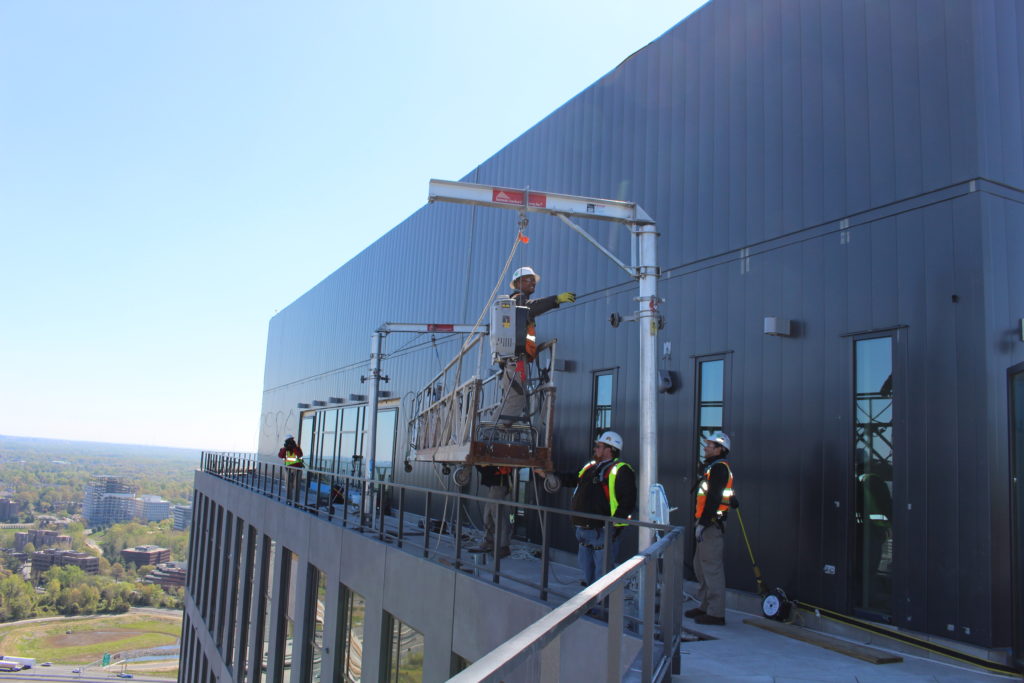

GuardrailsĪll walkways inside a scaffolding system must have guardrails. However, the best approach is to retire the harness from use following any falls. Remove your harness and lanyard from service if it was involved in a fall until a competent can examine it. Anything that seems worn out or damaged should be taken out of service. Unless specifically designed for such use, personal fall arrest systems shouldn’t be fastened to guardrails, hoists, or any other object.īefore each use, a competent person must check your harness and lanyard for signs of wear, damage, and other deterioration. The body harness’ connection point needs to be close to shoulder level in the middle of the wearer’s back. If your weight exceeds the device’s maximum user weight rating, use a different device.ĭevices for fall protection must be fastened to an authorized, stable anchor point. Always be aware of the weight restrictions for your fall arrest equipment. Any scaffolding, lift, or task higher than 6 feet in the air normally requires fall protection. To keep you safe in the case of a fall, use a Personal Fall Arrest System (PFAS) made up of a harness, a connecting device, and an anchoring point. Depending on the kind of scaffolding, a different sort of fall protection will be used. What Fall Protection Is Required When Working on a Scaffold?įall protection equipment is needed to prevent workers from falling when on a scaffold that is more than 10 feet above the ground. For all scaffolds that are not otherwise specified, each employee must be protected by the use of personal fall arrest systems or guardrail systems.Use a personal fall arrest system or guardrail system to prevent workers from falling from all open sides and ends of the scaffold, aside from the side next to the wall being laid.A guardrail system that is built within nine and a half inches of and along at least one side of the walkway must be installed to safeguard any walkway inside of a scaffold.Both systems must have a minimum 200-pound top rail capacity. When the platform is supported by the frame structure of a self-contained adjustable scaffold, it must be protected by a guardrail system, and when the platform is supported by ropes, it must be protected by both a personal fall arrest system and a guardrail system.On a single-point or two-point adjustable suspension scaffold, a personal fall arrest system and a guardrail system are required for protection.A personal fall arrest device must be used to prevent falls when working on a boatswains’ chair, catenary scaffold, float scaffold, needle beam scaffold, or ladder jack scaffold.Because scaffolds are temporary structures built to assist workers who are building or dismantling other structures, and because scaffolds are less suitable for the use of fall protection at the time the first level is created, different thresholds are needed.ĭepending on the kind of scaffold, several types of fall protection should be offered to the personnel: Though some regulations mandate the use of fall protection at six feet for the majority of building operations, the threshold for scaffolding operations is different. The maximum planned load, the load-carrying capacity of the scaffolds utilized, and any additional requirements that may be relevant.Įvery worker on a scaffold more than 10 feet above a lower level requires protection against falling.Potential electrical and fall risks in the work environment.Proper methods for handling electrical risks, as well as for setting up, maintaining, and taking apart the employed fall safety and falling object protection systems.Training such as our own train the trainer Scaffolding Certification Safety Training Course must include knowledge of:
#TWO POINT SUSPENDED SCAFFOLD HOW TO#
Each employee who works on a scaffold must be trained by a certified trainer to understand the risks and how to reduce or mitigate them. OSHA tightened the training standards to stop this from happening again. In 1996, The Bureau of Labor Statistics (BLS) investigations revealed that 25% of employees hurt in scaffold accidents had not received scaffold safety training. Working on or around scaffolding is safer thanks to OSHA’s construction scaffolding regulations. Workplace safety is at risk from dangerous scenarios including falls, flying objects, and unstable structures.

Scaffolding, on its own, makes a work environment unsafe at a construction site.


 0 kommentar(er)
0 kommentar(er)
